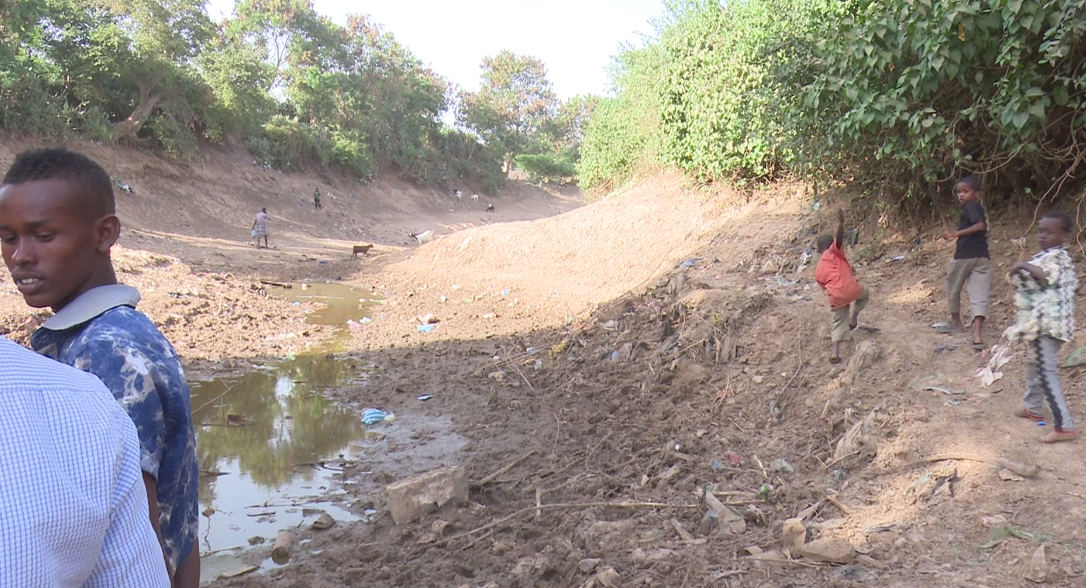Food supplies to Mogadishu to drastically fall as River Shabelle dries up


Food supplies to Mogadishu and other markets in the region will drop significantly in the coming weeks as the main water source-River Shabelle is fast drying up with some parts of the river already being used as footpaths.
Shabelle River which feeds farmlands in Hiiraan, Lower and Middle Shabelle regions has experienced serious water flow in the last one year and locals now report the river is drying up plunging thousands into uncertainty even as the continuing drought goes largely unabated.
Unless it rains, water in river Shabelle River, which is the main sources of irrigation water, farmers fear that there will be no harvests in the current season.

Farah Abdi, a farmer in Afgooye said the drought is a threat to the farms using irrigation.
“All the villages in the regions rely on water from the river to survive. I don’t think irrigation is possible without the flow of water of Shabelle River,” said Abdi.
Mire Osman Indha-Yare, an official from Somali Chamber of Commerce said without water from River Shabelle, Somali farmers cannot meet the market demand from millions of Somalis.
“It is hard for farmers to to irrigate their land now since their main source of water is now dry land,’ said Indha-Yare.
Shabelle River extends from Ethiopian highlands and enters Somalia in Hiiraan region where it passes Baledweyne, Bulabarde, Jalalaqsi and dozens of villages before draining into the ocean.
The farmers use to produce maize, bananas, sesame and other fruits and vegetables, with the once massive waters of the river a lifeline for thousands of Somali families.
Severe water shortages have been the trend for the last few months as water sources in remote areas have dried up and people now fear for the loss of human life due to the escalating drought.
Sections of the river have now been turned into huge dumping sites with polythene bags and other household wastes littering the strip.